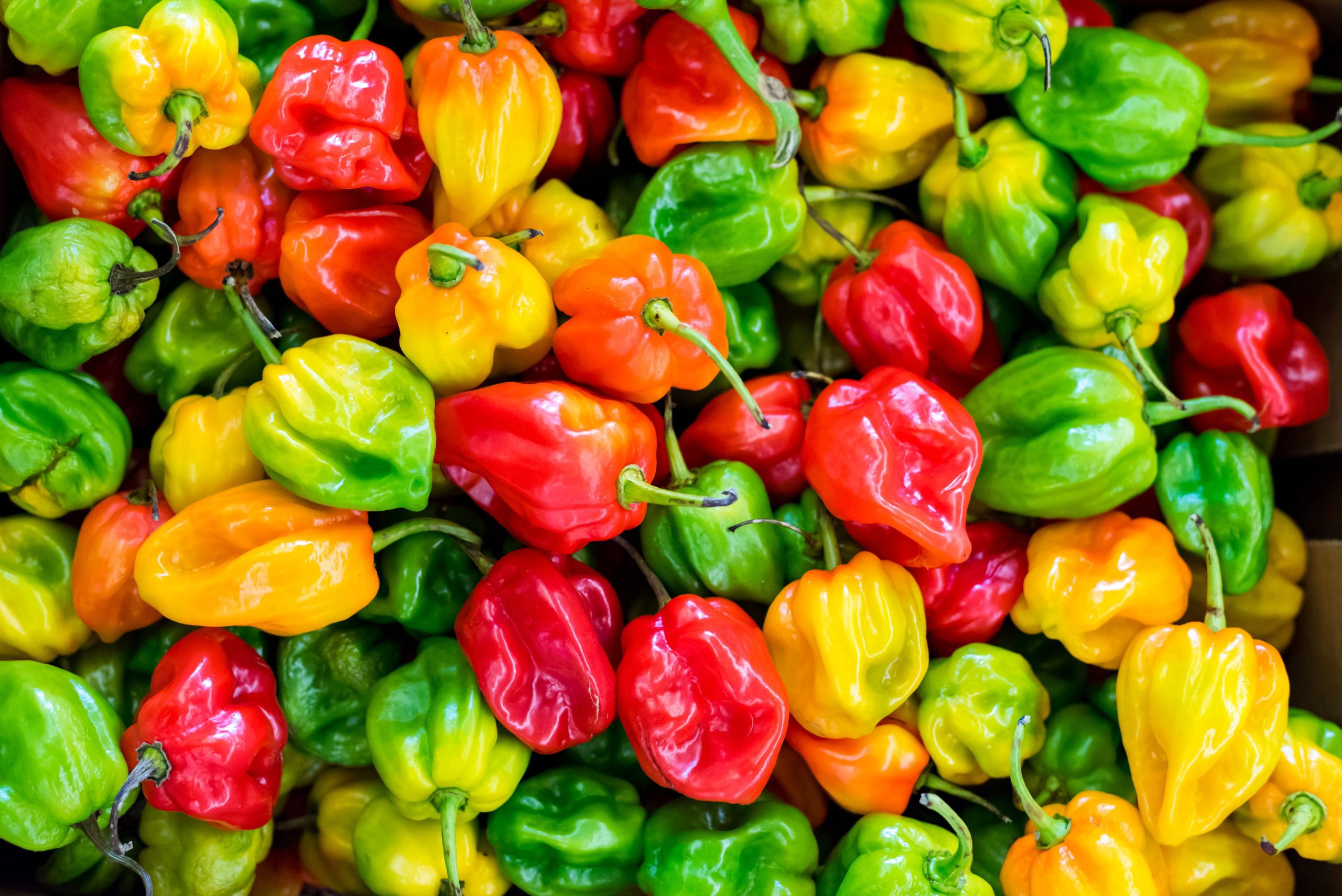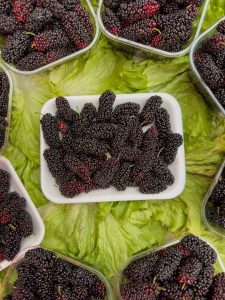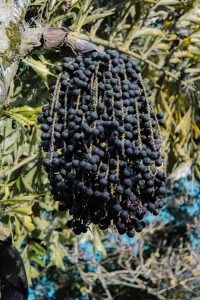
What Is a Pepper?
A pepper is a fruit that belongs to the flowering plant family Piperaceae. While often treated as a vegetable in culinary contexts, it is botanically classified as a berry.
Peppers come in various shapes, sizes, colors, and levels of spiciness. The heat of a pepper is measured on the Scoville scale, with sweet peppers at the bottom and spicy chili peppers at the top. Common types include bell peppers, jalapeños, and habaneros.
Peppers are rich in vitamins, particularly vitamin C, and offer various health benefits. They are a versatile ingredient used in cuisines worldwide, adding flavor and heat to dishes. Additionally, peppers can be consumed raw, cooked, or dried, and they are a significant part of many cultural and regional culinary traditions.
Why Do We Eat Peppers?
People eat peppers for various reasons, including their unique flavors, nutritional benefits, and cultural significance. Here are some reasons why peppers are commonly consumed:
- Flavor:
- Peppers add a distinct and often spicy flavor to dishes. Whether sweet or hot, they contribute to the overall taste profile of a variety of cuisines.
- Nutritional Benefits:
- Peppers are rich in essential nutrients, including vitamin C, vitamin A, and potassium. They also contain antioxidants that may have health benefits.
- Culinary Versatility:
- Peppers can be used in a multitude of ways in cooking. They can be eaten raw in salads, stuffed, grilled, roasted, sautéed, or used as a key ingredient in sauces and condiments.
- Cultural Significance:
- Peppers are integral to the culinary traditions of many cultures. They are featured prominently in dishes around the world, from spicy curries to salsas.
- Heat and Spice:
- For those who enjoy spicy foods, hot peppers provide a sensation of heat due to compounds like capsaicin. This spiciness is sought after in various cuisines and is a matter of personal preference.
- Colorful Presentation:
- Peppers come in a vibrant array of colors, including red, green, yellow, and orange. They add visual appeal to dishes, enhancing the overall presentation of meals.
- Health Consciousness:
- As part of a balanced diet, peppers contribute to a healthy lifestyle. Their low calorie content, coupled with the nutritional benefits, makes them a popular choice for health-conscious individuals.
In summary, peppers are consumed not only for their taste but also for their nutritional value, versatility in cooking, and cultural significance in various culinary traditions.
When Do We Eat Peppers?
Peppers are a versatile ingredient enjoyed at various times, depending on personal preferences and culinary choices. Here are different occasions and meals when people commonly eat peppers:
- Everyday Meals:
- Peppers are a staple in many everyday meals. They can be added to breakfast omelets, lunch salads, or dinner stir-fries for an extra burst of flavor.
- Snacking:
- Bell peppers, especially in their raw form, make for a healthy and crunchy snack. They can be sliced and enjoyed with dips like hummus or ranch.
- Cookouts and BBQs:
- Grilled peppers are a popular addition to barbecues and outdoor gatherings. They can be skewered, grilled, and served as a tasty side dish or added to kebabs.
- Stuffed Peppers:
- Bell peppers are often filled with a variety of ingredients like rice, meat, and vegetables, creating a wholesome dish. Stuffed peppers are commonly baked or simmered.
- Salads:
- Peppers, whether sweet or hot, are a common ingredient in salads. They add color, crunch, and flavor to green salads, pasta salads, or grain bowls.
- Salsas and Dips:
- Peppers play a crucial role in salsas and dips. Whether it’s a spicy salsa accompanying tortilla chips or a creamy pepper-based dip, they are often part of appetizers.
- Curries and Stir-Fries:
- Hot peppers are integral to many spicy cuisines. They are used in curries, stir-fries, and other dishes to impart heat and flavor.
- Cultural and Festive Dishes:
- Peppers are featured in festive and cultural dishes around the world. For example, they are used in Mexican dishes for celebrations like Cinco de Mayo.
- Garnishes:
- Sliced or diced peppers are often used as garnishes to add a pop of color and freshness to various dishes, including soups, stews, and main courses.
- Pickled Peppers:
- Pickled peppers are enjoyed as a condiment or accompaniment to sandwiches, burgers, and other savory dishes.
In essence, people eat peppers regularly as part of their daily meals, and their versatility allows them to be included in a wide range of culinary creations across different cuisines and occasions.
Ingredients of Peppers
The essential components of peppers, belonging to the Capsicum genus, include:
- Water:
- Peppers have a high water content, contributing to their juicy and crisp texture.
- Vitamins:
- They are rich in essential vitamins such as vitamin C, providing antioxidant properties that boost the immune system.
- Carbohydrates:
- Peppers contain carbohydrates, contributing to their overall caloric content.
- Fiber:
- A good source of dietary fiber, peppers aid in digestion and contribute to a feeling of fullness.
- Capsaicin:
- Present in chili peppers, capsaicin is responsible for the spicy or hot flavor and offers potential health benefits.
- Minerals:
- Peppers contain minerals like potassium and manganese, which play vital roles in various physiological functions.
- Phytonutrients:
- These bioactive compounds contribute to the vibrant colors of peppers and offer potential health benefits.
It’s important to note that the specific nutritional composition may vary slightly depending on the type and color of the pepper.
Types of Peppers
Peppers come in a variety of types, each with its own distinctive flavor, heat level, and culinary uses. Here are some common types of peppers:
- Bell Peppers:
- Bell peppers are sweet and come in various colors such as red, green, yellow, and orange. Used in salads, stir-fries, and as a colorful addition to various dishes.
- Chili Peppers:
- Chili peppers range from mild to extremely hot and come in various varieties like jalapeños, serranos, and habaneros. Used to add heat to dishes, sauces, and salsas.
- Jalapeño Peppers:
- Moderately spicy green peppers commonly used in Mexican cuisine. Sliced in sandwiches, stuffed, or used in sauces and salsas.
- Habanero Peppers:
- Extremely hot peppers with a fruity flavor. Used sparingly in hot sauces, marinades, and spicy dishes.
- Poblano Peppers:
- Mild chili peppers often used in Mexican dishes; dried, they are called ancho peppers. Stuffed, roasted, or used in sauces.
- Anaheim Peppers:
- Mild and slightly sweet chili peppers used in Southwestern and Mexican cuisine. Roasted, stuffed, or added to dishes for flavor.
- Cayenne Peppers:
- Small, red, and very spicy peppers, often used in powdered form. Adds heat to dishes, sauces, and spice blends.
- Serrano Peppers:
- Hotter than jalapeños, with a bright and crisp flavor. Salsas, sauces, and as a topping for various dishes.
- Ghost Peppers (Bhut Jolokia):
- Extremely hot peppers originally from India. Used sparingly in hot sauces and spicy dishes.
- Banana Peppers:
- Mild and sweet peppers often used in salads and sandwiches. Pickled, stuffed, or sliced in various dishes.
- Cubanelle Peppers: Sweet peppers with a slight heat, often used in Mediterranean cuisine. Frying, stuffing, or adding to salads.
- Thai Peppers:
- Small and very hot peppers commonly used in Thai cuisine. Adds intense heat to Thai dishes, curries, and sauces.
- Pepperoncini:
- Mild and slightly tangy peppers often pickled. Used in salads, sandwiches, and antipasto.
- Red Peppers:
- Matured green bell peppers with a sweeter taste. Roasted, grilled, or used in various dishes.
- Green Peppers:
- Unripe bell peppers with a slightly bitter taste. Used in salads, stir-fries, and as a pizza topping.
These are just a few examples, and there are many more pepper varieties around the world, each contributing unique flavors and heat levels to diverse cuisines.
Signs of Ripe, Signs of Raw and Signs of Rotten Peppers
Signs of Ripe Peppers:
- Color Change:
- Bell Peppers: Change from green to red, yellow, orange, or other colors depending on the variety.
- Chili Peppers: Color intensifies as they ripen, usually from green to red or another vibrant color.
- Firmness:
- Should feel firm and have a smooth, taut skin.
- Glossy Appearance:
- Skin should have a shiny or glossy appearance.
- Heavy Feel:
- Ripe peppers feel heavier for their size.
- Sweet Aroma:
- Bell peppers emit a sweet aroma when ripe.
Signs of Raw Peppers:
- Green Color:
- Bell Peppers: Commonly green when unripe.
- Chili Peppers: Often start green and change color as they ripen.
- Firm Texture:
- Raw peppers have a crisp and firm texture.
- Bitter Taste:
- Unripe bell peppers can have a slightly bitter taste compared to the sweet flavor when ripe.
Signs of Rotten Peppers:
- Wrinkled or Shriveled Skin:
- The skin becomes wrinkled and loses its firmness.
- Moldy Spots:
- Presence of mold or dark spots on the surface.
- Slimy Texture:
- When touched, the pepper feels slimy or overly soft.
- Unpleasant Odor:
- Rotten peppers emit a foul or unpleasant odor.
- Discoloration:
- Colors may change to a dull or off appearance, indicating decay.
- Mushy Consistency:
- The pepper feels mushy rather than firm when gently squeezed.
- Leaking Fluid:
- Visible signs of fluid leakage or oozing.
- Off-Putting Smell:
- A strong and unpleasant smell is a clear indicator of spoilage.
When selecting peppers, it’s essential to consider the intended use. For example, if you prefer sweeter flavors, wait for bell peppers to fully ripen and change color. In contrast, if you seek a milder taste, select chili peppers when they are still green. Always store peppers properly to maintain freshness and quality.
Summary
Peppers, belonging to the Capsicum genus, are versatile fruits widely utilized in global cuisine. They encompass various types, with bell peppers and chili peppers being common varieties. Bell peppers, transitioning in color as they ripen, are large, bell-shaped, and sweet, while chili peppers range from mild to hot and display diverse colors during ripening.
Choosing ripe peppers involves considering factors like color change, firmness, and aroma. Spoiled peppers exhibit signs like wrinkling, mold, unpleasant odor, and mushiness. In culinary applications, peppers add flavor, color, and nutrition, consumed raw, stuffed, grilled, or in various dishes.
Proper storage in the refrigerator maintains freshness, with timely usage enhancing culinary appeal. Overall, peppers offer a spectrum of tastes, colors, and nutritional contributions, making them indispensable in diverse culinary preparations.






